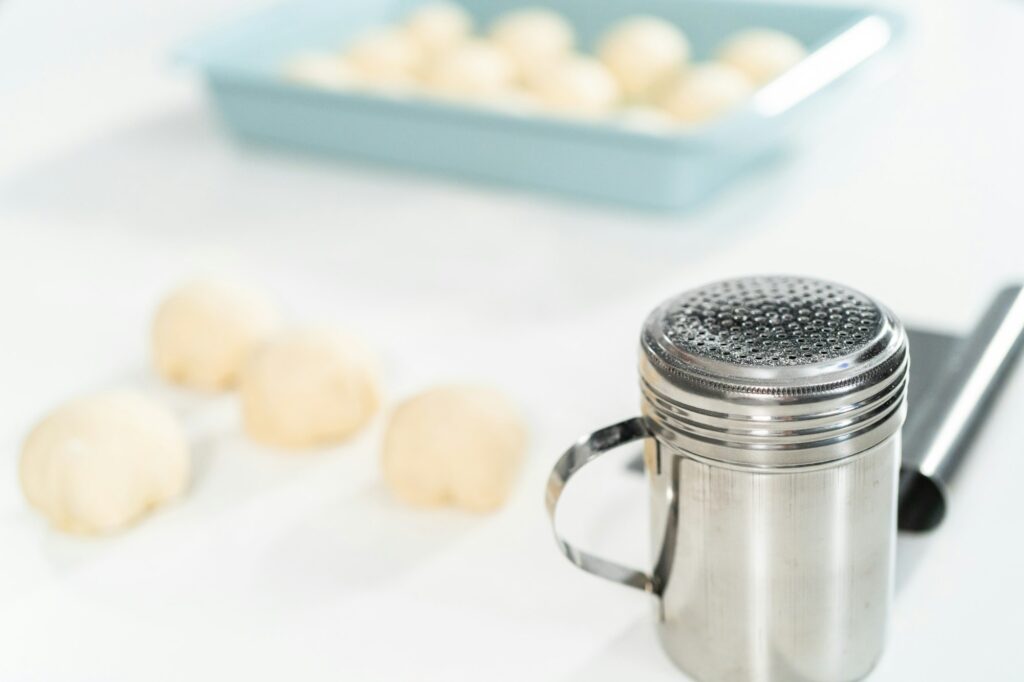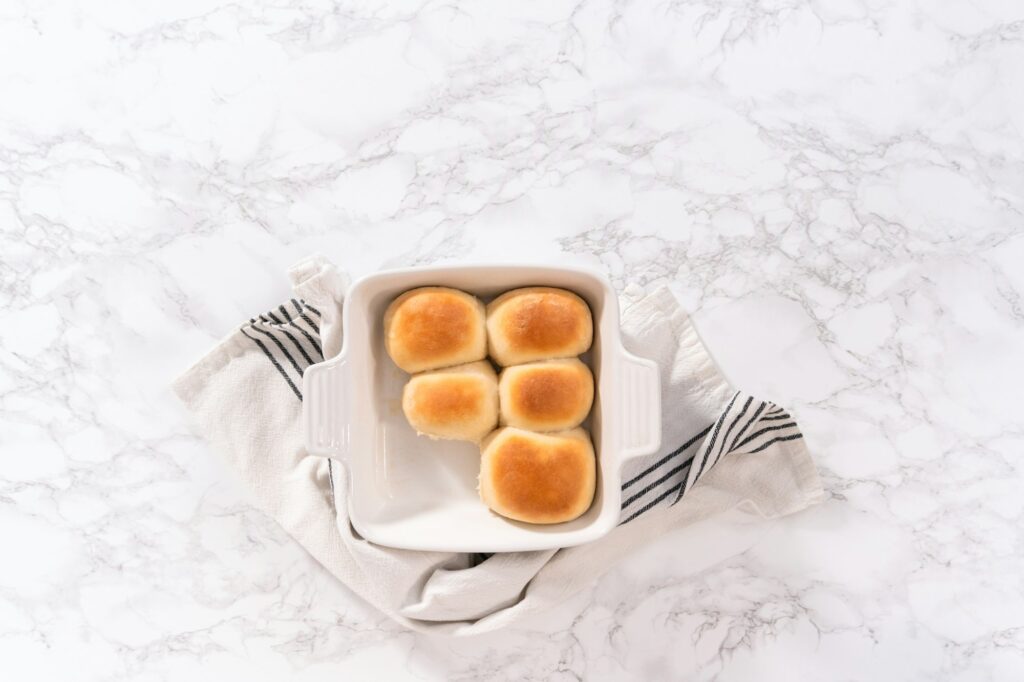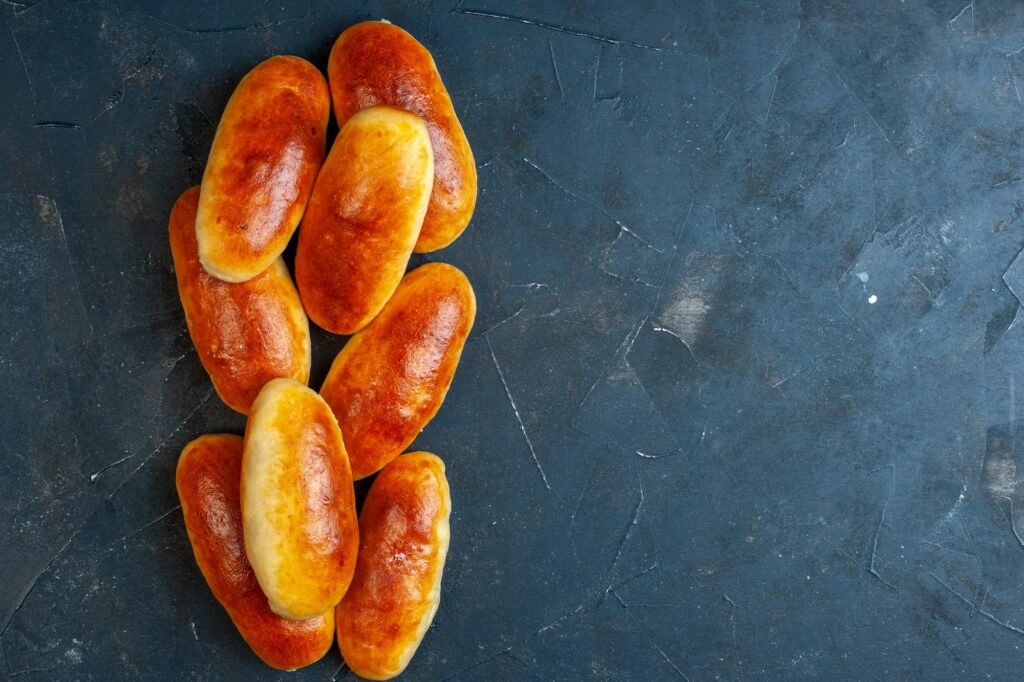In today’s fast-paced world, the value of quick and easy recipes cannot be overstated. Among these culinary shortcuts, no yeast dinner rolls emerge as a shining example. These rolls offer a splendid combination of simplicity and taste, making them a go-to option for meals where time or resources are limited. Unlike traditional bread recipes, these dinner rolls eliminate the need for yeast, proofing, or kneading, presenting an effortless route to delicious, fluffy bread that complements any dish.
Transitioning into the heart of our culinary journey, we’ll explore why these easy dinner rolls have garnered such popularity. Their place in modern kitchens is not just a matter of convenience but also a reflection of their versatile nature, which allows them to blend seamlessly into any meal setting. Whether it’s a lavish dinner party or a cozy family meal, these fluffy bread delights are sure to impress. As we delve deeper into the nuances of making no yeast dinner rolls, we’ll uncover the secrets behind their simplicity and how they manage to captivate our taste buds time and again.
Why Choose No Yeast Dinner Rolls?
Opting for no yeast dinner rolls presents a multitude of benefits, primarily focusing on ease and convenience. These attributes make them an ideal choice for those moments when time is of the essence or when yeast is not readily available. Furthermore, the simplicity of these rolls does not compromise their quality or taste, providing a quick bread side dish that can rival the traditional, yeast-leavened counterparts.
Ease of preparation:
With no need for yeast, these dinner rolls eliminate the steps of proofing and kneading, significantly reducing the overall time and effort required. This aspect is particularly appealing to beginners or anyone looking for a stress-free baking experience.
Convenience:
The ingredients for no yeast dinner rolls are staples in most pantries, ensuring you can whip up a batch of fresh, warm bread with minimal planning. This convenience makes the recipe perfect for unexpected guests or last-minute meal planning.
Comparing these rolls to their traditional yeast-based siblings highlights their appeal. Traditional dinner rolls, while delicious, require a considerable amount of time for proofing, alongside the technical know-how of working with yeast. In contrast, no yeast rolls streamline the process, offering a more accessible route to homemade bread that still delivers on taste and texture.
The difference in preparation method also introduces a unique texture and flavor profile to the no yeast dinner rolls. While they may not have the exact texture of yeast-leavened bread, they boast a tender, biscuit-like quality that many find irresistible. This distinct characteristic allows them to stand out, providing an alternative that is not only quicker but also diversely enjoyable.
Ingredients for No Yeast Dinner Rolls
Creating no yeast dinner rolls begins with a simple, yet precise selection of ingredients. Each component plays a crucial role in achieving the desired taste and texture of the rolls, making it essential to understand their importance. The basic ingredients include:
- Sugar: Adds a hint of sweetness, balancing the flavors.
- Salt: Enhances the overall taste of the rolls.
- Baking Powder: Acts as the leavening agent, replacing yeast to provide the rolls with their lift and fluffiness.
- Milk: Contributes to the dough’s moisture, enriching the texture of the bread.
- Butter or Oil: Adds fat, which is crucial for tender crumbs and flavor.
- Flour: The backbone of the rolls, giving them structure.
Understanding the role of each ingredient not only aids in the preparation of no yeast dinner rolls but also opens up avenues for customization and experimentation. Whether sticking to the basics or venturing into variations, the simplicity and flexibility of this recipe make it a joy to explore.
Step-by-Step No Yeast Dinner Roll Recipe Guide
Creating no yeast dinner rolls is a straightforward process, allowing even novice bakers to achieve delicious results. Here’s a detailed guide to mixing the ingredients, forming the dough, and baking the rolls:
Mixing the Ingredients:
- Begin by whisking together the dry ingredients: sugar, salt, and baking powder. This ensures even distribution throughout the dough, which is crucial for uniform rise and flavor.
- Add the milk and butter (or oil) to the dry mixture. The liquid ingredients should be incorporated gently into the dry ones to form a cohesive dough. It’s essential not to overmix at this stage to keep the rolls tender.
Forming the Dough into Balls:
- Once the dough comes together, turn it out onto a lightly floured surface. Divide the dough into equal portions. This recipe typically makes about 8 to 12 rolls, depending on the desired size.
- Shape each portion into a smooth ball. The surface doesn’t need to be perfect, but uniformity in size helps ensure even baking.
Baking Instructions and Tips for No Yeast Dinner Rolls
- Preheat the oven as specified in the recipe, usually around 350°F (175°C). Lining the baking sheet with parchment paper or a silicone baking mat prevents sticking and ensures easy cleanup.
- Arrange the dough balls on the prepared baking sheet, leaving enough space between them for expansion. If desired, the tops can be brushed with a bit of melted butter or an egg wash for a golden finish.
- Bake in the preheated oven until the rolls are golden brown and a toothpick inserted into the center comes out clean. The baking time is crucial; overbaking can lead to dry rolls, while underbaking might leave them doughy inside.
Following these steps yields fluffy and buttery dinner rolls that require no kneading or proofing, making them a quick bread recipe ideal for any meal. Here are some additional tips to enhance your baking experience:
- Temperature plays a vital role. Ensure your milk and butter are at room temperature to mix more easily into the dough.
- For a softer crust, cover the rolls with a clean kitchen towel as they cool. This traps steam and softens the exterior.
- Experimenting with add-ins like herbs, cheese, or garlic butter can transform these simple rolls into a customized treat that complements the main dish.
By following this guide, even those new to baking can produce no yeast dinner rolls that are as delightful to make as they are to eat.
Variations and Customizations
One of the joys of making no yeast dinner rolls is the ease with which they can be customized to suit different tastes and occasions. Here are some popular variations and tips for customizing your rolls:
- Sweet Roll Variation: By adjusting the amount of sugar in the recipe, you can easily transition from savory dinner rolls to sweet, dessert-worthy creations. Adding ingredients like cinnamon, vanilla extract, or citrus zest can further enhance the flavor profile, making them a versatile addition to any meal.
- Using Greek Yogurt for Tenderness: Substituting half of the milk with Greek yogurt introduces a tangy flavor reminiscent of sourdough and results in an exceptionally tender crumb. This variation is perfect for those who enjoy a more complex taste and a softer texture.
- Butter vs. Oil for Texture: The choice between butter and oil can significantly affect the rolls’ texture. Using butter results in a richer flavor and a slightly denser crumb, while oil leads to a lighter, more airy roll. Depending on your preference for taste and texture, you can experiment with this ratio to find your perfect balance.
Tips for Customization for No Yeast Dinner Rolls:
When customizing your no yeast dinner rolls, keep these tips in mind:
- Balance Is Key: While it’s tempting to load up on add-ins, maintaining a balance ensures that the rolls remain light and fluffy. Too many heavy ingredients can weigh down the dough.
- Experiment in Moderation: If trying a new variation, consider making a half batch to ensure the results meet your expectations before committing to a larger quantity.
- Adjustments May Be Necessary: Adding wet ingredients like yogurt or cheese might require slight adjustments to the flour to achieve the right dough consistency.
Embracing these variations and customizations allows you to tailor no yeast dinner rolls to any palate or occasion, making them a versatile and beloved recipe in any baker’s repertoire.
Nutritional Information
Understanding the nutritional content of no yeast dinner rolls is crucial for those mindful of their dietary intake. Here’s a breakdown of the primary nutritional components in an average roll, based on standard ingredients:
- Calories: Each roll typically contains about 100 to 150 calories, making it a moderate addition to your meal in terms of energy intake.
- Carbohydrates: Carbs are the primary macronutrient in these rolls, with each serving containing approximately 20 to 30 grams. This is mainly due to the flour and sugar in the recipe.
- Protein: There’s a modest amount of protein, around 3 to 5 grams per roll, coming primarily from the milk and flour.
- Fat: The fat content can vary significantly based on the use of butter or oil, ranging from 2 to 10 grams per roll. Using oil or butter affects not only the texture but also the nutritional profile.
- Fiber: With less than 1 gram of dietary fiber per roll, these are not a significant source of fiber unless whole wheat flour or other high-fiber ingredients are incorporated.
Including no yeast dinner rolls in your diet provides a delicious way to complement a balanced meal, and with the right modifications, they can fit into various dietary plans. Whether you’re enjoying them as part of a hearty dinner or as a light snack, these rolls can be adapted to suit your nutritional preferences while still delivering on taste and satisfaction.
Pairing Suggestions for No Yeast Dinner Rolls
No yeast dinner rolls are a versatile addition to almost any meal, enhancing both the flavor and the dining experience. Here’s how to perfectly pair these rolls with other dishes to create a complete and satisfying meal:
- Soups and Stews: The fluffy texture of the rolls makes them excellent for dipping into rich, hearty soups and stews. Whether it’s a creamy potato soup or a robust beef stew, these rolls absorb the flavors beautifully, adding a comforting carbohydrate component to your meal.
- Salads: Pair the rolls with a fresh, vibrant salad for a balanced meal. The bread complements the crispness of the greens and the acidity of the dressing. So, it creates a harmonious blend of textures and flavors. Consider a Caesar salad or a mixed greens salad with a balsamic vinaigrette.
- Pasta Dishes: Serve the rolls alongside your favorite pasta dish, such as spaghetti carbonara or fettuccine Alfredo, for a fulfilling meal. The rolls are perfect for mopping up any leftover sauce, ensuring not a drop of deliciousness is wasted.
- Main Courses: Whether it’s roasted chicken, grilled fish, or a vegetarian casserole, these dinner rolls are the perfect side. They can be used to scoop up sauces or as a base for creating mini sandwiches with leftovers.
Storage and Reheating Tips
Proper storage and reheating techniques are essential to maintain the quality and taste of your no yeast dinner rolls. Here’s how to keep them fresh and delicious for as long as possible:
Storing Fresh Rolls
- Room Temperature: Store the rolls in an airtight container or wrapped tightly in plastic wrap for up to 2 days. Keeping them in a cool, dry place prevents them from drying out too quickly.
- Refrigerator: For longer storage, place the rolls in a sealed bag or container in the refrigerator. They can last up to a week when refrigerated, though the texture may slightly change.
Freezing
- No yeast dinner rolls freeze exceptionally well. To freeze, wrap each roll individually in plastic wrap and then place them in a freezer bag. They can be stored in the freezer for up to 3 months.
- Thaw frozen rolls at room temperature or in the refrigerator overnight. This gradual thawing helps maintain their texture.
Reheating
- Oven: Preheat your oven to 350°F (175°C). Wrap the rolls in aluminum foil to prevent them from drying out and bake for about 10-15 minutes or until heated through. This method helps restore the rolls’ fresh-baked taste and texture.
- Microwave: For a quick reheating method, wrap the rolls in a damp paper towel and microwave on high for 20-30 seconds. This method is fast but can sometimes lead to a chewy texture if overheated.
Tips for Best Results
- Moisture is Key: When reheating, ensuring the rolls retain moisture is crucial. The aluminum foil or damp paper towel techniques help achieve this.
- Avoid Overheating: Whether in the oven or microwave, watch closely to prevent the rolls from becoming too hard or chewy.
- Refresh with Butter: After reheating, brushing the rolls with a little melted butter can add moisture and flavor, making them taste freshly baked.
FAQs Section
Q: Can I make these rolls vegan?
A: Yes, no yeast dinner rolls can easily be made vegan. Substitute the milk with your preferred plant-based alternative, such as almond or soy milk, and use oil instead of butter. These simple swaps allow you to enjoy the same delicious rolls without any animal products.
Q: How long do these rolls stay fresh?
A: When stored properly at room temperature in an airtight container, the rolls can stay fresh for up to 2 days. Refrigerated, they last about a week, and if frozen, they can be kept for up to 3 months without losing much of their quality or taste.
Q: Can I freeze the dough for later use?
A: While freezing the dough is possible, it’s more common and effective to freeze the baked rolls. The leavening action of baking powder, used in the dough, is most effective when baked fresh. If you choose to freeze the dough, expect slight variations in texture upon baking.
Conclusion
No yeast dinner rolls represent a marvel of baking simplicity, offering a quick, easy, and versatile option for anyone looking to complement their meals with the warmth and comfort of fresh bread. By eliminating the need for yeast, these rolls not only save time but also open up a world of culinary possibilities, allowing even novice bakers to achieve delicious results with minimal effort.
The beauty of this recipe lies in its adaptability. Whether you’re seeking a classic, buttery roll, a vegan alternative, or a custom creation infused with herbs and cheese, the base recipe accommodates a wide array of preferences and dietary needs. This versatility, coupled with straightforward guidelines ensure that these dinner rolls can be enjoyed in their best form.



